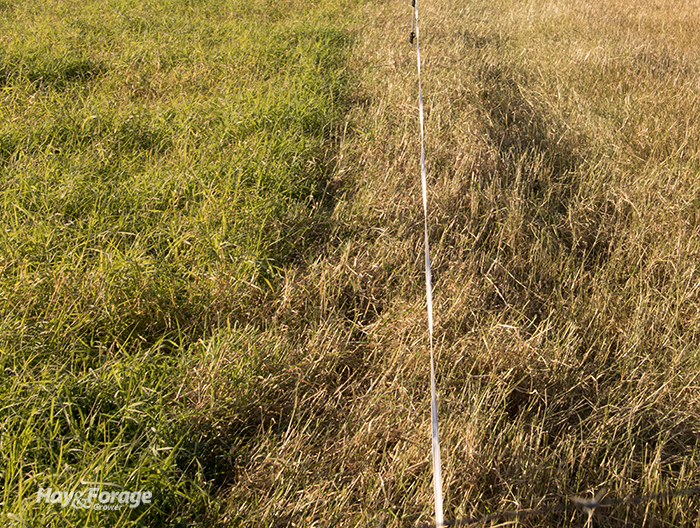
This time of year, we hear a lot about stockpiling forages to extend the grazing season, especially with tall fescue. But there are other forage species that can also be successfully stockpiled. One of those is bermudagrass, a dominant forage resource in the South.
“Stockpiled bermudagrass has moderate forage quality and represents an economical option to reduce feed purchases,” says Liliane Silva, an extension forage specialist with Clemson University. “Stockpiling is a practice that allows forage accumulation in the pasture for grazing later in the fall when typical growth is limited or nonexistent.”
Silva notes that once bermudagrass enters dormancy in early fall, there is often a forage gap until cool-season forages are ready to graze. In an average year, bermudagrass forage production occurs from April through late September.
To stockpile bermudagrass, the forage specialist recommends to graze or cut the field to a 4-inch stubble height in late August. Apply about 50 pounds of nitrogen and any needed potassium and let the forage accumulate for six weeks. Initiate grazing during mid-October.
Strip it
Multiple research trials confirm that for maximum utilization and efficiency of stockpiled forage, paddocks need to be strip grazed. “Strip grazing consists of using temporary fencing to have animals graze a strip for a short period of time and progressively move to a new strip ahead,” Silva explains. “This practice allows for the adjustment of the size of strips based on the forage mass available, allowing animals to spend two to three days in each strip and optimizing the forage removal.”
When strip grazing, water and minerals are typically provided in the first strip and remain there for the duration. When the wire is moved to provide a new strip, no back fence is used so the cattle continue to have access to water. In terms of forage quality, Silva says stockpiled bermudagrass crude protein ranges from 8% to 12%, depending on the fertilization program.
Add alfalfa
To boost forage yield, enhance feed quality, and negate the need for nitrogen fertilizer, Silva offers the option of incorporating alfalfa into bermudagrass stands. “Alfalfa is a perennial legume with high forage production and quality and has similar drainage and nutrient requirements as bermudagrass,” she explains. “Over the past decades, the development of newer varieties and improved management practices have contributed to the return of alfalfa to the region.”
Improving the forage quality with alfalfa can help reduce the need for supplementation during the fall. Stockpiled alfalfa-bermudagrass stands offer crude protein concentrations of 14% to 18% in early fall and will meet the nutrient requirements for virtually all livestock classes.

